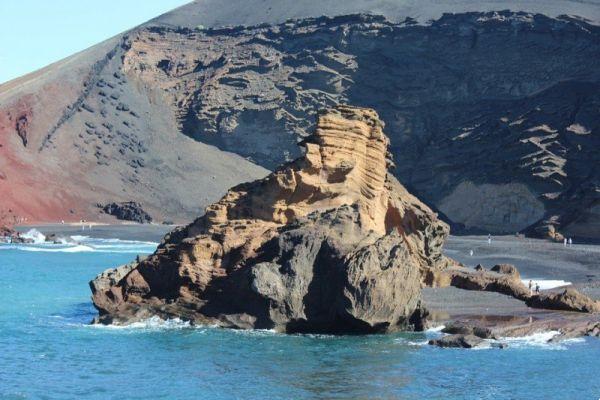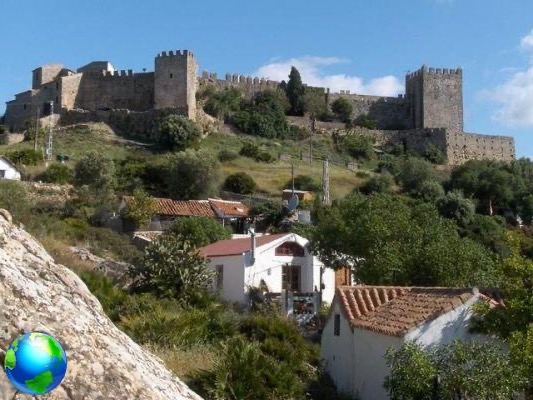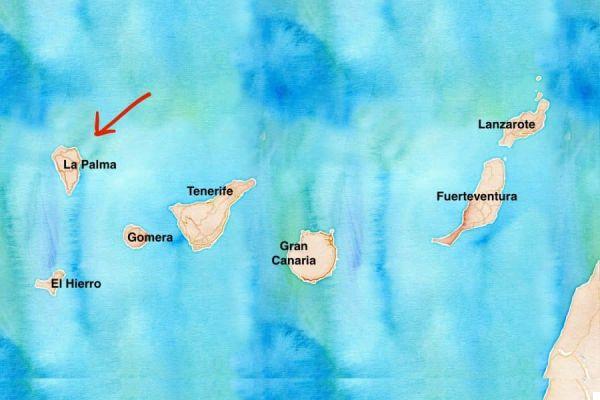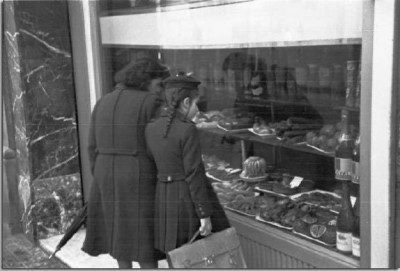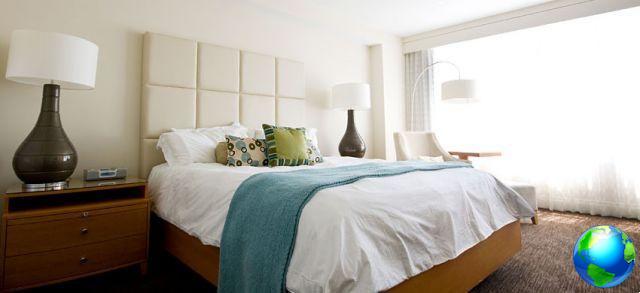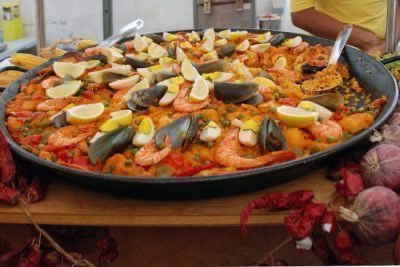
An extremely fascinating way to get to know the most authentic Andalucia is to explore its rural hinterland by following theWhite Villages Itinerary.
It is a journey by car that touches about twenty in between the most beautiful typical villages of southern Spain, known as "pueblos blancos" for the characteristic white-walled houses. They are almost always villages of Arab origin, founded on hills that in the past had a defensive function; the streets of the historic center are narrow and steep, lined with houses (strictly white) adorned with flowers.
Many of these villages are inserted in a splendid natural setting and the white walls that have made them famous all over the world create wonderful contrasts with the colors of the sky, the rocks, the vegetation.
The itinerary winds through the Serrania de Ronda in the province of Malaga and the Sierra region in the province of Cadiz, crossing valleys, hills and mountains along lonely roads. Even in the middle of August, when the beaches of the Costa del Sol are invaded by tourists, you can have the streets all to yourself, in a silence broken only by the sounds of nature.
This slow and rural tourist route will take you to know the less touristy areas of Andalusia and will remain indelibly imprinted in your heart.
White Villages Itinerary: le tappe
There is no official itinerary with arrows to follow: everyone can create their own "route" by choosing the pueblos blancos to visit based on the time and budget available.
However, themost followed itinerary is what we present below: a journey by car that allows you to concentrate the best of the Andalusian hinterland in a few days.
It is divided into 19 stages:
Alcalá del Valle – Setenil de las Bodegas – Torre Alháquime – Olvera – El Gastor – Algodonales – Zahara de la Sierra – Puerto Serrano – Villamartin – Bornos – Espera – Arcos de la Frontera – Algar – Prado del Rey – El Bosque – Ubrique – Benáocaz – Villalluenga del Rosario – Grazalema.
The overall distance is 235 km. There are not many, but consider that many sections of the itinerary take place on narrow mountain roads, so to travel it all you have to calculate more than four hours without stops.
While it is possible, we do not recommend walking the route in just one day. The route de los Pueblos Blancos is an experience to be lived at a slow pace: only in this way can you fully savor the magical atmosphere of the Andalusian hinterland. The ideal would be to visit no more than 3-4 villages per day.
You can customize the itinerary by removing some villages, reversing the direction of travel or adding detours to visit more touristic places.
The most popular detour is the one for Ronda: the largest of all the pueblos blancos in Andalusia, more like a provincial town than a country village, it stands in a scenic location on a cliff and is simply wonderful.
If, on the other hand, you have little time and need to limit the stops i most beautiful pueblos blancos, I will visit absolutely, are Alcalá del Valle, Setenil de las Bodegas, Olvera, Zahara de la Sierra, Arcos de la Frontera and Grazalema.
Below we see the main attractions of each location one by one.
A “bridge” village between the provinces of Cadiz and Malaga, Alcalà del Vallè sits on a green valley full of streams, with views of the nearby Tomillos and Las Errizas nature reserves. With a rich historical heritage, it is distinguished from other pueblos blancos for some Mannerist style buildings.
The best known tourist attraction of Alcalà are los Thyme Dolmens, a complex of prehistoric tombs that includes an impressive menhir, a huge pointed rock set in a magnificent natural setting.
Strolling in the village take a look at its beautiful churches including the Church of Santa Maria del Valle in Baroque style, the Hermitage of Christ of Mercy and, 6 km away, the Monastery of Caños Santos which offers beautiful views of the surrounding nature.
Setenil de las Bodegas, known as "the city of the mountain", is a very particular pueblo blanco, built in such a way as to adapt to the course of the Guadalporcún river and take advantage of all the available space.
The main attraction of this singular village, which is not without churches and historical monuments, are its peculiar houses, set against impressive rock walls that seem to implode and crush them at any moment.
Some houses, but also rooms and cellars, are even built inside caves. A country in the rock, in short, something unique whose magic cannot be described in words: you absolutely must see it.
The small village of Alháquime Tower it is somewhat reminiscent of the Berber cities in the hills of North Africa. Few tourists choose it for a stopover, which means that if you decide to do so, you will have the village all to yourself.
To see the cemetery and some remains of the Moorish castle (dating from the thirteenth century), and the eighteenth-century Iglesia de Nuestra Señora de la Antigua.
Olvera it is one of the most emblematic locations of the entire itinerary de los pueblos blancos: a characteristic town of Arab origin that looks like a cascade of white houses perched along the slopes of a hill.
On the top of the hill the two cultural jewels of the city stand proud: the castle-fortress built on a spur of rock and recently restored, and the imposing Church of the Incarnation. On both sides of the town, they are an impressive sight for those who admire them on arriving in the city, but they are also worth a visit inside.
The surroundings of the city are all planted with olive trees and the oil produced in the area is prized: during your visit to Olvera, do not miss a crouton with local olive oil.
The village of The Gastor is known as the Balcony of the Pueblos Blancos: from the two mountains that fall within the city, El Algarín and Las Grajas, you can enjoy wonderful views of the other villages and the surrounding countryside.
After admiring the view, take some time to visit the mulino Old Palomino Brothers and Museum of Popular Uses and Customs, with an exhibition on local traditions, a section dedicated to El Tempranillo, a famous Andalusian bandit of the nineteenth century.
The picturesque village of Algodonales it is historically one of the most important centers of artisan production of the guitar, the most loved musical instrument in Andalusia. Here the famous luthier was born Valerian Bernal, considered one of the best in all of Spain (and perhaps the world), sadly passed away in 2018.
His artisan workshop, which remained open thanks to his son Rafael Bernal Gil, is according to anyone who has visited it a magical place, where you can breathe the passion and attachment to tradition that made Bernal guitars so special.
Algodonales is also an ideal destination for lovers of active holidays: in the area you can practice numerous sports, first of all hiking. Those who want to experience stronger emotions can launch themselves with the hang glider.
Not to be confused with Zahara de los Atunes along the Costa de la Luz, Zahara de la Sierra it is considered by many to be the most picturesque of the Andalusian pueblos blancos.
Like many other villages it stands on top of a hill, but what makes it special is the artificial lake created downstream from the village. The blue of the water creates a dramatic contrast with the white of the houses.
There are many historical and cultural attractions of the town including churches, towers, castles and fountains, but the majority of tourists come here to take enchanting walks or to practice water sports on the lake.
Port Serrano is a rural town from which a popular cycle and pedestrian path starts, the Via Verde della Serra, obtained from a former railway.
Excluding hikers and cyclists interested in this route, tourists generally ignore Puerto Serrano which makes it a very pleasant town to visit.
Villamartin it has 12.000 inhabitants, which may seem small but it is a considerable number for a pueblo blanco in Andalusia. It boasts numerous historical monuments including the Iglesia de las Angustias, the Los Topete y los Rios house-palace and the Iglesia de Nuestra Senora de Virtudes.
Particularly beautiful is the town hall square, with its tiled fountains and benches and four towering palm trees.
The village of Terminals, of ancient origins, rises along the banks of the placid Guadalete river, an important tributary of the Guadalquivir. It is famous for handicrafts made from local materials such as palm leaves, reeds and rushes.
The town of Espera is perhaps not among the most beautiful in Andalusia, but it is worth a stop for the 400-hectare nature reserve with three lakes that rises on its territory.
Some itineraries place Arcos de la Frontera as the first stop on the Ruta de los Pueblos Blancos: if you want to get off to a great start, it's definitely a good idea.
The town develops around the Rock of Arches, a rocky hill on the side of the Guadalete River which forms an artificial basin at this point known as Lake of Arcos. It is a wonderful sight as a whole, viewed from afar, and is in turn an exceptional vantage point from which to observe the other villages in the area.
When the sun goes down this charming town becomes even more romantic, so it is strongly recommended to stay here at least one night.
Algar it is located between the two most important natural parks in the province of Cadiz, Alcornocales and Grazalema, and is a good base for exploring other villages or hiking in the parks. Take a look at its historic stone bullring.
A King's Meadow you can breathe a mountain air. The town is famous for the area's hiking trails, including the Cero del Verdugo trail and the Lomas trail.
4 km from the city center there is also an important archaeological area where the Roman city of Iptuci once stood. The area was already inhabited previously, as evidenced by the numerous remains of the Paleolithic, Neolithic and Bronze Age.
The quaint village of The Forest, located 287 meters above sea level, it is an excellent base for exploring the nearby Sierra de Grazalema Natural Park and for tasting trout specialties.
Trout fishing is in fact one of the main activities in the area and it is possible to visit a trout farm.
The picturesque village of Ubrique occupies a basin at the foot of the majestic Cruz de Tajo cliff bathed by the river that gives the town its name.
His fame is linked to that of the famous (now retired) bullfighter Jesús Janeiro Bazán known as Jesulin of Ubrique. Winner of an impressive number of bullfights, he is an eccentric character who was the protagonist of many excesses, scandals and oddities. The city has dedicated a monument and a museum to him in the bullring.
Another very popular village among hiking lovers is benaocaz, which rises more than 700 meters above sea level and is surrounded by mountains.
The city center is a fascinating mix of typical white houses with flowered balconies and elegant eighteenth-century mansions.
Villalluenga del Rosario of all the villages on the itinerary, it is the one that rises at a higher altitude and attracts a good number of hikers.
It is also an interesting destination for gourmets, who can taste the payoyo cheese prepared with milk from a particular goat species that lives only in this area.
The village is also famous for local handicrafts and for the splendid caves that are located in the surroundings. One of these is the Mouth of the Sima del Republicano, the largest cave in all of Andalusia.
Grazalema is one of the most visited villages in the itinerary of los Pueblos Blancos: certainly one of the most beautiful, it is also the one with the greatest choice of hotels and b & bs to sleep in and bars and restaurants to spend the evening.
Set on a fertile valley 800 meters high dominated by the rocky peak of the Peñon Grande, enjoys a particular microclimate which makes it the wettest spot in northern Spain. Here you can finally find some relief from the scorching Andalusian temperatures.
You cannot help but fall in love with this picturesque town walking through its immaculate alleys and characteristic squares, admiring the monuments dedicated to local traditions or drinking from a nice stone fountain. If you love shopping, take a look at the shops that sell leather items.
Eat raggiungerei White Towns
If you want to visit Andalusia along the route of los Pueblos Blancos starting from Alcalà del Valle,recommended arrival airport I say Malaga. You can rent a car directly at the airport and reach the first stop of the itinerary in an hour and a half.
If you prefer to start from Grazalema the airport of Seville is closer. Both Malaga and Seville are connected by direct flights from low cost airlines.






